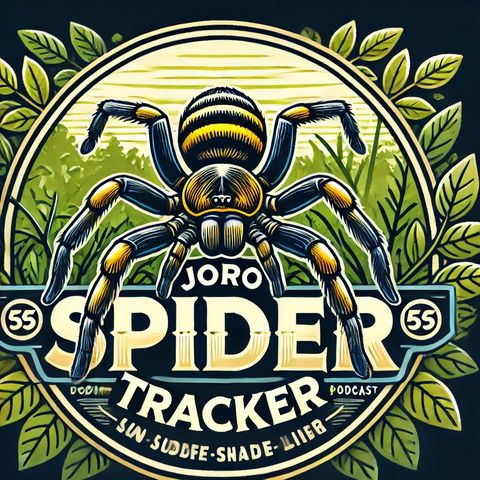Invasive Spiders and Bugs Causing Concern: Joro and Kissing Bugs Spreading Across Regions

Sign up for free
Listen to this episode and many more. Enjoy the best podcasts on Spreaker!
Download and listen anywhere
Download your favorite episodes and enjoy them, wherever you are! Sign up or log in now to access offline listening.
Invasive Spiders and Bugs Causing Concern: Joro and Kissing Bugs Spreading Across Regions
This is an automatically generated transcript. Please note that complete accuracy is not guaranteed.
Description
In recent years, the spread of certain insects and other pests across various regions has raised concerns for both agricultural professionals and the general public. Among these, the Joro spider...
show moreThe Joro spider, a native to East Asia, has been making headlines as it proliferates across the Southeastern United States. These large, brightly colored spiders are distinct in their appearance, with yellow, blue, and red markings on their bodies, making them easy to spot in the foliage. Despite their daunting size and appearance, Joro spiders are not known to pose a direct threat to agricultural crops. However, their rapid spread and the vast webs they weave can be a nuisance, often covering large areas. These spiders are also remarkable for their resilience to colder temperatures, suggesting they could continue to spread further north than initially expected.
Joro spiders utilize a method of dispersal that is quite fascinating; they engage in a behavior known as "ballooning," where young spiders release silk strands that catch the wind, lifting them to new locations. This ability has facilitated their quick spread across regions and has led some to dub them as “parachuting” spiders.
Another concerning invasive species is the "Kissing Bug," officially known as triatomine bugs. These insects are carriers of the parasite Trypanosoma cruzi, which can cause Chagas disease—a serious and sometimes chronic illness presenting significant symptoms, potentially including cardiac complications. The Kissing Bug typically bites humans around the mouth or face, which is how it earned its nickname. After feeding, it defecates near the site of the bite, and the feces, which contain the parasites, can be unwittingly rubbed into the bite wound or mucous membranes by the victim.
Chagas disease has a wide range of symptoms, from mild to severe, including fever, fatigue, body aches, and severe cardiac and intestinal complications. What makes the Kissing Bug particularly dangerous is not just the disease it carries but its ability to inhabit domestic settings, hiding in cracks and crevices during the day and becoming active at night.
Both Joro spiders and Kissing Bugs highlight significant issues related to the control and management of invasive species and pests. Their spread is facilitated by both natural behaviors and human activities such as the movement of goods and global travel. Addressing these challenges requires a coordinated approach including public awareness, monitoring and reporting sightings, and research into effective control methods that do not adversely impact native species or the environment.
As these species continue to make their presence known across various states, it becomes increasingly important for individuals to remain informed about these pests, taking preventative measures to minimize their impact and spread. The ongoing study and monitoring by experts will be crucial in developing strategies to manage these populations effectively, ensuring they do not become a more significant threat to human health or to the ecological balance.
Information
| Author | QP-4 |
| Organization | William Corbin |
| Website | - |
| Tags |
Copyright 2024 - Spreaker Inc. an iHeartMedia Company
